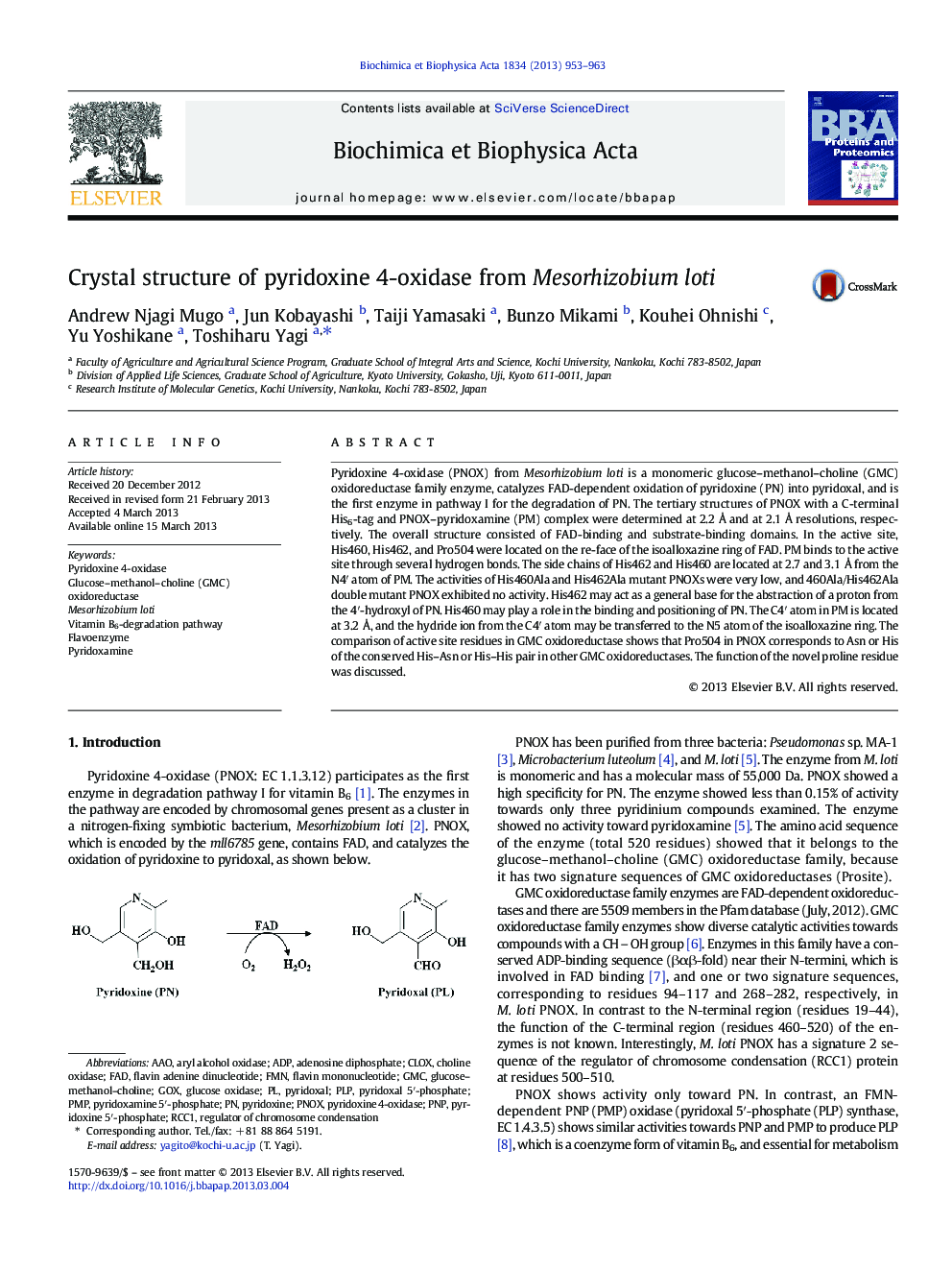| Article ID | Journal | Published Year | Pages | File Type |
|---|---|---|---|---|
| 10536996 | Biochimica et Biophysica Acta (BBA) - Proteins and Proteomics | 2013 | 11 Pages |
Abstract
Pyridoxine 4-oxidase (PNOX) from Mesorhizobium loti is a monomeric glucose-methanol-choline (GMC) oxidoreductase family enzyme, catalyzes FAD-dependent oxidation of pyridoxine (PN) into pyridoxal, and is the first enzyme in pathway I for the degradation of PN. The tertiary structures of PNOX with a C-terminal His6-tag and PNOX-pyridoxamine (PM) complex were determined at 2.2Â Ã
and at 2.1Â Ã
resolutions, respectively. The overall structure consisted of FAD-binding and substrate-binding domains. In the active site, His460, His462, and Pro504 were located on the re-face of the isoalloxazine ring of FAD. PM binds to the active site through several hydrogen bonds. The side chains of His462 and His460 are located at 2.7 and 3.1Â Ã
from the N4â² atom of PM. The activities of His460Ala and His462Ala mutant PNOXs were very low, and 460Ala/His462Ala double mutant PNOX exhibited no activity. His462 may act as a general base for the abstraction of a proton from the 4â²-hydroxyl of PN. His460 may play a role in the binding and positioning of PN. The C4â² atom in PM is located at 3.2Â Ã
, and the hydride ion from the C4â² atom may be transferred to the N5 atom of the isoalloxazine ring. The comparison of active site residues in GMC oxidoreductase shows that Pro504 in PNOX corresponds to Asn or His of the conserved His-Asn or His-His pair in other GMC oxidoreductases. The function of the novel proline residue was discussed.
Keywords
Related Topics
Physical Sciences and Engineering
Chemistry
Analytical Chemistry
Authors
Andrew Njagi Mugo, Jun Kobayashi, Taiji Yamasaki, Bunzo Mikami, Kouhei Ohnishi, Yu Yoshikane, Toshiharu Yagi,
